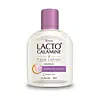What's inside
What's inside
 Key Ingredients
Key Ingredients

 Benefits
Benefits

 Concerns
Concerns

 Ingredients Side-by-side
Ingredients Side-by-side

Water
Skin ConditioningKaolin
AbrasiveRicinus Communis Seed Oil
MaskingGlycerin
HumectantZinc Oxide
Cosmetic ColorantZinc Carbonate
PEG-100 Stearate
Glyceryl Stearate
EmollientPolysorbate 80
EmulsifyingHamamelis Virginiana Extract
AntiseborrhoeicCetearyl Alcohol
EmollientXanthan Gum
EmulsifyingPhenoxyethanol
PreservativeChlorphenesin
AntimicrobialParfum
MaskingCI 77491
Cosmetic ColorantCI 15850
Cosmetic ColorantCitronellol
PerfumingCoumarin
PerfumingLinalool
PerfumingBenzyl Alcohol
PerfumingHydroxycitronellal
PerfumingCinnamyl Alcohol
PerfumingAmyl Cinnamal
PerfumingIsoeugenol
PerfumingGeraniol
PerfumingBenzyl Salicylate
PerfumingBenzyl Cinnamate
PerfumingBenzyl Benzoate
AntimicrobialEugenol
PerfumingLimonene
PerfumingWater, Kaolin, Ricinus Communis Seed Oil, Glycerin, Zinc Oxide, Zinc Carbonate, PEG-100 Stearate, Glyceryl Stearate, Polysorbate 80, Hamamelis Virginiana Extract, Cetearyl Alcohol, Xanthan Gum, Phenoxyethanol, Chlorphenesin, Parfum, CI 77491, CI 15850, Citronellol, Coumarin, Linalool, Benzyl Alcohol, Hydroxycitronellal, Cinnamyl Alcohol, Amyl Cinnamal, Isoeugenol, Geraniol, Benzyl Salicylate, Benzyl Cinnamate, Benzyl Benzoate, Eugenol, Limonene
Ingredients Explained
These ingredients are found in both products.
Ingredients higher up in an ingredient list are typically present in a larger amount.
Parfum is a catch-all term for an ingredient or more that is used to give a scent to products.
Also called "fragrance", this ingredient can be a blend of hundreds of chemicals or plant oils. This means every product with "fragrance" or "parfum" in the ingredients list is a different mixture.
For instance, Habanolide is a proprietary trade name for a specific aroma chemical. When used as a fragrance ingredient in cosmetics, most aroma chemicals fall under the broad labeling category of “FRAGRANCE” or “PARFUM” according to EU and US regulations.
The term 'parfum' or 'fragrance' is not regulated in many countries. In many cases, it is up to the brand to define this term.
For instance, many brands choose to label themselves as "fragrance-free" because they are not using synthetic fragrances. However, their products may still contain ingredients such as essential oils that are considered a fragrance by INCI standards.
One example is Calendula flower extract. Calendula is an essential oil that still imparts a scent or 'fragrance'.
Depending on the blend, the ingredients in the mixture can cause allergies and sensitivities on the skin. Some ingredients that are known EU allergens include linalool and citronellol.
Parfum can also be used to mask or cover an unpleasant scent.
The bottom line is: not all fragrances/parfum/ingredients are created equally. If you are worried about fragrances, we recommend taking a closer look at an ingredient. And of course, we always recommend speaking with a professional.
Learn more about ParfumPhenoxyethanol is a preservative that has germicide, antimicrobial, and aromatic properties. Studies show that phenoxyethanol can prevent microbial growth. By itself, it has a scent that is similar to that of a rose.
It's often used in formulations along with Caprylyl Glycol to preserve the shelf life of products.
Water. It's the most common cosmetic ingredient of all. You'll usually see it at the top of ingredient lists, meaning that it makes up the largest part of the product.
So why is it so popular? Water most often acts as a solvent - this means that it helps dissolve other ingredients into the formulation.
You'll also recognize water as that liquid we all need to stay alive. If you see this, drink a glass of water. Stay hydrated!
Learn more about Water